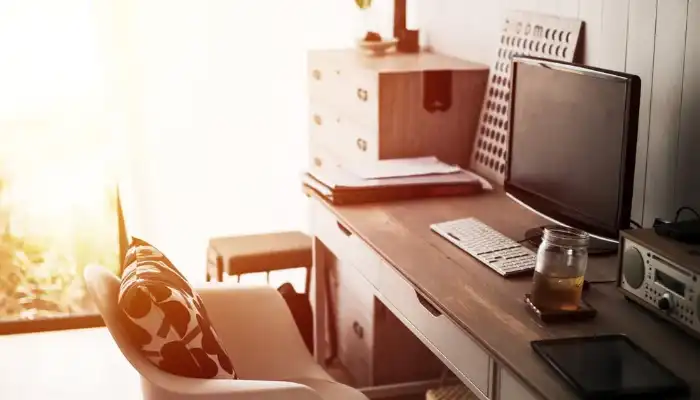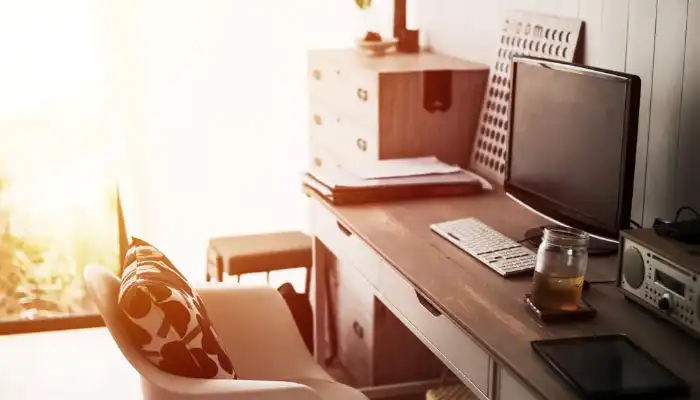How Can You Design a Functional Home Office Space?
The advent of remote work has made it difficult to differentiate between our private and professional lives. Presently, individuals have converted their houses into workplaces making it increasingly important to set aside an area to serve that purpose. An effectively planned home office will enhance output, concentration, and health for you to excel in your job. The following are some things you can consider when planning for a convenient home office; these tips may be very useful if well implemented.

Assessing Your Needs: The Foundation for Functionality
Before taking a plunge into furniture and design, it may be worth pausing to consider your needs. Understanding how you work and the tasks that you do will help in creating a space that is really suitable for you.
- Work Requirements: Think about what your job entails. Will you need a lot of space to spread out papers or is a small desk fine? What technology do you require –multiple screens, printer, scanner?
- Space Availability and Limitations: Be honest about how much room you have in your house. Measure possible office areas and note things such as doors, windows, or plugs.
- Ergonomic Factors: Ergonomics should be your priority to ensure long-term comfort and health. Some features you can take into consideration are chair height, desk height and proper monitor positioning to avoid strain or discomfort.
Finding the Perfect Spot: Location, Location, Location
When thinking of where to have a home office, the location within your house cannot be overlooked.
Reflect on this light and air. In particular, it is great when you can locate space with a huge amount of sunlight. For one thing, daylight helps you stay awake and concentrate more easily compared to artificial light which affects the eyes badly. Also, seek for offices with good ventilation systems since it increases comfortability during work sessions.
Additionally, consider noise. Find a place away from the noisy areas such as the kitchen or living room. In case noise becomes an issue headphones that cancel sound may be used or other techniques of making the room silent may come in handy to solve this problem.
Also important is accessibility. You want to make sure your office is easy enough to get into but doesn’t appear at the center of everything. It might be difficult to concentrate if people are always coming through there. Then try to find a happy medium where it’s not too crowded yet easy enough to access.
Finally, beware of distractions. Keep off from having things like TVs or video games close by your office which can entice you into ceasing work abruptly whereas these interruptions nearby might make it hard for you to remain attentive during your job time.
Furnishing for Function and Comfort: Choosing the Right Pieces
A functional home office starts with a careful selection of furniture. Here are some critical things to consider:
- The Perfect Desk and Chair: Make an investment in ergonomic desk and chair. Ensure that the desk is at the right height for the chair while the chair supports your back and lumbar comfortably. You may want to consider a chair that you can adjust its settings so as to go along with your comfort level.
Table 1: Ergonomic Considerations for Your Home Office Furniture
| Feature | Ergonomic Benefit |
|---|---|
| Adjustable Chair Height | Ensures proper leg position and reduces back strain |
| Lumbar Support | Provides support for the lower back and promotes good posture |
| Armrests | Reduce shoulder and neck strain |
| Adjustable Desk Height (Optional) | Allows for working while standing or sitting |
- Size and Style: The desk needs to be suitable for one’s space utilization requirements and also consider available space. This should depend on how much work you have, what equipment you use on regular basis, or any other factors that may affect your choice of size. The style must be coherent with the design of your entire home while still maintaining its function.
- Solutions in Storage: Storing things is vital within a home office setting. Your workspace will remain organized and free from clutter when you have desks, shelves, drawers among other storage compartments in place. Organizers, trays, and bins shall help you categorize further than this.
- Placing Furniture Optimally for Best Workflow: Positioning of furniture should lead to the smooth flow of activities at work. Place your desk where it gets natural lighting and the nearness of items used frequently. You may think about having a printer stand or scanner shelf close by which can be accessed easily too.
Maximizing Productivity and Comfort: Beyond the Basics
A functional home office involves more than just furniture. How to make a space that promotes productivity and comfort:
- Lighting is Key: Wherever possible, use natural daylight, but back it up with adjustable task lighting for specific work areas. Lamps should have diffusers and emit a soft warm light to reduce eye strain.
- Incorporating Comfort: Buy ergonomic equipment such as wrist support or footrests that prevent discomfort during prolonged working sessions. The inclusion of plants helps in air purification and also creates a sense of serenity.
- Personalize Your Space: Get yourself surrounded by things that inspire you. Personalizing your room makes it more inviting as well; family photos, art or motivational quotes can do the trick too.
Staying Connected: Technology Integration
Technology is an indispensable element of most home offices. Here’s how to ensure smooth integration:
- Internet Connection that Works: Reliable workflow needs a powerful and unfailing internet connection. Investigate various suppliers of internet service within your locality to identify the package that provides you with the desired speed and data limit. Important things to consider are download and upload speeds, dependability, and customer service.
- Cable Organization: Messy wires and cords can cause untidiness and optical diversion. Get cable management solutions such as cabling rings or under desk baskets for your office so that it appears tidy.
- Tech Must-haves: Furnish your home office with the essential tools related to your work. These could be computers, printers, scanners, external hard drives, besides other gadgets designed particularly for your occupation.
- Power Up Stations: Have chargers available at all times for easy recharging of devices. You may want to think about getting a docking station with multiple ports where you can plug in all your phones, tablets, or laptops at once instead of searching for cables when their battery power has been used up.
Creating a Distraction-Free Zone: Taming the Chaos
Your productivity can be tampered with by external distractions. Here are some ways of reducing them and creating a focused work environment:
- Silence the Noise: Buy Noise Cancelling Headphones. This will help in blocking out background noise from your roommates, family members, or even noisy neighbors. White noise machines or nature sounds apps can act as a mask to improve concentration.
- Boundaries are Key: Establish clear boundaries with family members or housemates that reduce interruptions. Communicate your working hours and ask them politely not to enter into your workspace unless it is urgent. Use a ‘do not disturb’ sign on your door when you need to concentrate.
- Design for Focus: Your focus can also be affected by the visual environment. Remove clutter from your desk area and other surrounding spaces. Paint the walls in soothing colors like light blue or green which promotes concentration levels in people’s brains.
Budget-Friendly Functionality: Making the Most of Your Resources
Having a home office which works well does not have to be costly. Here are some affordable ideas:
- Use What You Have: Look around your house and see if there’s anything you already own. That ancient dining table? It can be a good work area for you. Got vintage bookshelves? They can store documents and office supplies.
- Find Budget-Friendly Furniture: Visit stores that sell cheap office furniture. You’ll find tables with useful storage spaces or chairs that aren’t too expensive.
- Get Crafty with DIY: Do you thrive on doing stuff yourself? Are you the creative type? How about this! Grab some shoe boxes, wrap them nicely then bingo! Instant storage containers! Repurpose glass jars into holders of pens and pencils in their right places. And those wall shelves? Well, using salvaged wood, one can make them as cool and budget-friendly storages.
Remember, creating an office space at home even on a tight budget lies in the use of what you’ve got, seeking out inexpensive options while adding personal creativity to it through do-it-yourself craftsmanship.
Personalize Your Haven: A Space that Inspires
Let your home office be a place that motivates and inspires you. There are ways to personalize your space and show off your peculiar style:
Inspiration Station: Incorporate things that inspire. These could range from a vision board of what you want to achieve, framed quotes of famous people, or works of art that lift your spirit.
Personal Touches: Think personally when designing the office space. Having family photos, a few plants, or even a favorite drinking mug can add warmth to the area.
Style it Up: Dare to flaunt your style! Choose furniture pieces and decorative items that blend with your whole house look. Your workspace is an extension of yourself so make it personal; whether going for minimalism or a bohemian touch, let everything characterize who you are.
Conclusion
By following the methods stated above, it is possible to convert your workspace from a messy corner into a functional and comfortable home office. Remember, a well-designed home office isn’t just about aesthetics; it’s about creating an environment that fosters productivity, focus, and well-being.
Buy a good chair, make sure there is enough light in the room and add things that inspire you or make you want to work. You can make your own functional haven where you can thrive and excel in all of your business endeavors through some planning and innovative thoughts.

